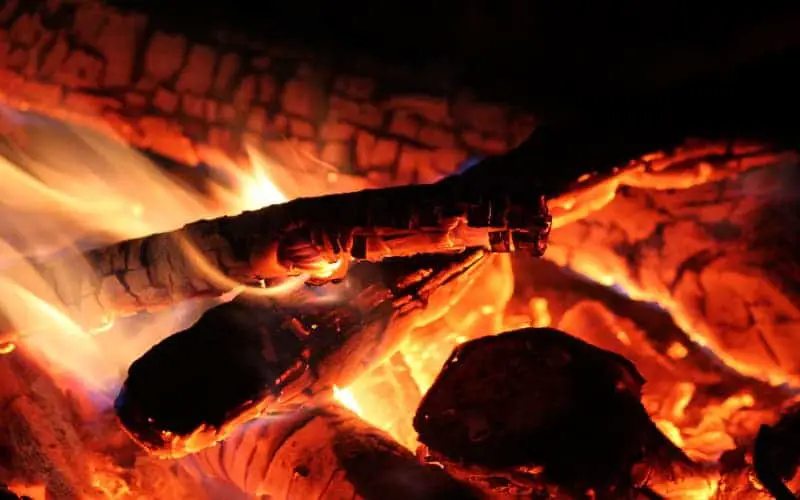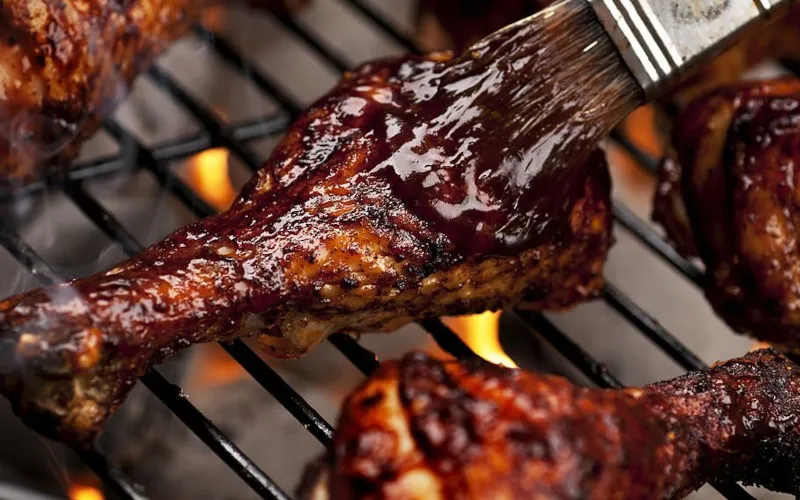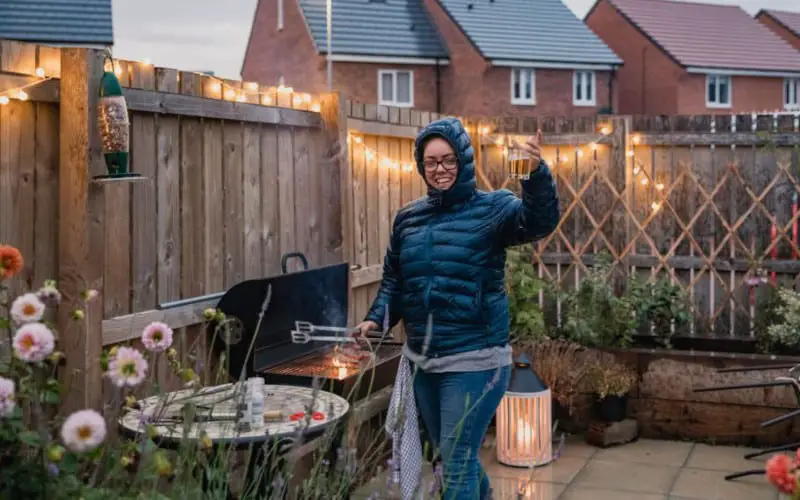Charcoal grilling has become a very effective strategy to cook food. In the United States, almost every other household owns a charcoal grill. That said, many consider charcoal grilling to be a complicated task.
If you are a beginner and are keen to learn everything about charcoal grilling, you will be pleased to know that there is not much to it!
This article discusses the basics of charcoal grilling. However, before we look into everything beginners need to know about charcoal grilling, let us first understand what really is charcoal grilling.
What is Charcoal Grilling?
Charcoaling is simply grilling your food using an appliance called a charcoal grill. These charcoal grills utilize either lump charcoal (natural) or charcoal briquettes as their primary source of fuel. The charcoal, when burned, will turn into cinders generating the heat that you require to cook your food.
Things You Need For Charcoal Grilling
The following are the essential things you need to consider before you embark on your charcoal grilling voyage.
Choosing your charcoal
Choosing what kind of charcoal you will grill with is as critical as selecting your charcoal grill itself. It would be unwise to just buy the very first charcoal bag you come across.
It is important to be privy to the primary differences between the 2 common charcoal types (lump charcoal and charcoal briquettes). That is because these differences can impact both how the food item you cook over the grill tastes and the fire inside this grill.
What is Lump Charcoal?
Courtesy of its clean-burning nature and capability to generate high heat, people often consider lump charcoal to be the ideal charcoal type. It is typically the needed source of fuel for many of the Kamado ceramic grills. We would strongly suggest it for other types of charcoal grills as well.
You make lump charcoal by burning wood pieces in an oven without sufficient oxygen for an extended time period. That results in what are basically dense carbon hunks. Your charcoal grill might get very hot using lump charcoal but can provide a terrific excellent sear on any kind of meat.
Lump fuel, unlike briquette charcoal, has no additives or fillers that provide food with an oily and charred taste. Furthermore, lump charcoal enables you to fuel your grill again without exposing yourself to unpleasant smells and too much smoking.
What are Charcoal Briquettes?
Charcoal briquettes are the second most common charcoal type that people opt for. This charcoal is generally made from a mixture of coal, sawdust, binders, and dust.
Charcoal briquettes are a very easy and economical way you can use for charcoal grill lighting. Hence, if you are not looking to spend too much money when choosing your coal, this is your best bet!
Charcoal lighting
Charcoal grill lighting may seem to be quite an intimidating task, especially for beginners. However, it is quite simple if you do it the right way by following these basic steps.
- First, charcoal briquettes and a grill chimney are required. You will need matches or a stick lighter and newspaper as well.
- Scrunch up a few newspaper sheets and put them in the chimney’s bottom section.
- Over the newspaper, place a layer of coals. Then scrunch up the second sheet of newspaper over these coals and pour in another coal layer on the top.
- Make use of a match or lighter-to-light newspaper. When you do that, the newspaper will quickly catch fire and ultimately your coals will catch it as well. Since heat tends to rise, ensure that you light up the newspaper at the very bottom.
- The chimney will begin smoking as the newspaper burns up. Ultimately, the smoke will stop after the newspaper burns up. However, that does not mean you are all set.
- Next, you have to allow the chimney to carry on heating until you can see that your coals are red hot.
- Ensure the top grill grate is not on when your coals are red hot, and then toss these coals over the bottom grate. If you want to have heat evenly all over the charcoal grill, spread the coals uniformly. Pile coals on a single side if you want a warm and hot side of the charcoal grill.
- It is essential to pour coals over the bottom grate rather than into the grill’s bottom directly. The former practice gets the coals much closer to the food item, which means you get extra direct heat. Moreover, it makes it easier to extract used coals from the charcoal grill at a later time.
- The final step involves putting the top grill grate back on and allowing it to sit for some time to get very hot.
Controlling heat
It is very important to control heat levels when you are grilling charcoal. The following are a few of the most effective ways to control heat.
Adjusting airflow
Many charcoal grills feature vents on their bottom parts. When you open the vents, you will receive more air and a much hotter fire. When you close the vents partially, you will get cooler fire and less amount of air.
Ensure that the vents are wide open when you are lighting your charcoal and setting up the grill. Ash might have clogged the vents if you are experiencing any problems in starting a charcoal grill.
Make grill shield
If your food begins to burn or quickly more swiftly than you prefer, build a grill shield. You can do this by folding an aluminum foil piece in thirds (similar to folding a letter) and sliding the shield under the food.
The shield will be blocking heat and as a result, slow the process of cooking. Moreover, a grill shield functions exceptionally well for preventing the bamboo skewers’ exposed ends from burning up.
Monitor distance
It is true that the closer you shift the food item to the fire, the hotter and more quickly the food will cook. A few of the charcoal grills feature grates you can lower or raise to bring your food farther away or closer to the fire.
If your charcoal grill features a fixed grate, you can stack your coals much higher toward the grill’s back and control the level of heat by moving food items farther away or closer to the fire.
Charcoal storage
How to store your charcoal is an important thing to know if you are interested in charcoal grilling. Make sure to keep your charcoal sealed, completely dry, and far away from the fire. Moisture has a significant role here and should do your best to avoid it.
Keep in mind that water and charcoal do not go well together at all!
The lump has a tendency to become harder to burn and light, whereas briquettes release into a sticky and messy slurry. It is important to make note of the fact here that charcoal usually has an indefinite lifetime.
That said, the accelerants present in briquettes might evaporate with time if you expose them to air. That is possible if you, for instance, leave them in a container open or in a frayed bag.
Frequently Asked Questions
How to Clean Your Charcoal Grill?
These are the steps you have to take to clean your charcoal grill properly:
- Collect all your cleaning supplies: Foil, a grill brush, plastic or paper bags, a putty knife, or a bristle brush. You might also need a fork.
- Clean the charcoal grate and grill grate: Remove the grill grate if it is possible for you. Clean it extensively with a coarse cleaning brush or grill brush. Repeat this same procedure with the charcoal grate on the charcoal grill.
- Scrub using aluminum foil: An aluminum foil boil is a splendid scrubber. Make use of it to clean any residual debris or gunk off the grate.
- Clean the bottom part of the lid and grill: Wipe or brush any debris that you see on the grill’s bottom. Empty the ash catcher if there is one. Next, utilize a putty knife or bristle brush for scraping off any peeling black material (usually grease and carbon flakes).
- Next, you just have to put back the grill together and you are all good!
Can I Make Use of a Charcoal Grill in Fireplace?
Any charcoal grill expert will not recommend you to operate a charcoal grill within your house. That is because, when you burn charcoal, it kicks out stray sparks and small embers. You definitely do not want these in your house!
It also lets out carbon monoxide which is extremely poisonous and can prove to be quite lethal in your home. Hospitalizations, serious house fires, and even death are all likely possibilities when you try to utilize an outdoor charcoal grill in your house.
Why Charcoal Grilling?
The following are some of the benefits of charcoal grilling:
- Better taste: The tender and smoky taste that you can acquire from your charcoal grill are considerably better than what you get when you use an electric or gas grill.
- Portable: One of the best things about a charcoal grill is that it is portable and very easy to transport. You can stuff it in your car effortlessly and take off!
- Quick Ignition: A match, some newspaper, and a standard charcoal chimney are all you need to begin charcoal grilling in less than 20 minutes!
How Much Charcoal You Should Use?
The answer to this question varies considerably as it will be contingent on factors like grill type, temperature, and time. Reaching the temperatures, you intend to target depends on the fuel level; more charcoal volume means more heat.
This certain rule is applicable to airflow as well. As the availability of oxygen assesses just how hot your charcoal can burn, this is where the grill or smoker type you use comes into play.
For instance, an upright conventional charcoal grill is designed to exchange the air and, thus, hotter heat. Then, you also have ceramic grills. These grills have very reduced airflow and they will require less amount of charcoal.
They will also last longer in prolonged cooks. It is not unimaginable for even a tiny load of charcoal to last around 15 hours in a Kamado grill!
How Do You Add Charcoal If You Are Cooking Slowly?
If you are fortunate enough, your charcoal grill will have a built-in way to add charcoal swiftly. This can be hinged cooking grates or even a door to a reservoir of charcoal.
If there is no such way, it is best to purchase a pair of heat-resistant gloves and a decent pair of charcoal tongs that have long handles. In fact, it probably serves you best to invest in these things anyway! Your arm hair and eyebrows will graciously thank you!
Is It True that Lump Charcoal Burns Hotter Compared to Charcoal Briquettes?
Yes, that is very much true! Lump charcoal does indeed burn quicker and hotter than briquettes. As it combusts very easily, managing the temperature can become quite tricky.
You will have to keep a vigilant eye on your fuel levels. Compared to charcoal, charcoal briquettes create more ash as well.
Wrapping It Up
To summarize, charcoal grilling is not as brutal as most people make it out to be. If you are familiar with the important considerations and follow all the right steps, grilling your meat or chicken on a charcoal grill will not bother you.
Just make sure to play it safe and not take any unnecessary risks. In addition, do not let your kids near the charcoal grill unless an adult supervises them.
If you take all the necessary precautions, charcoal grilling becomes a breeze!





